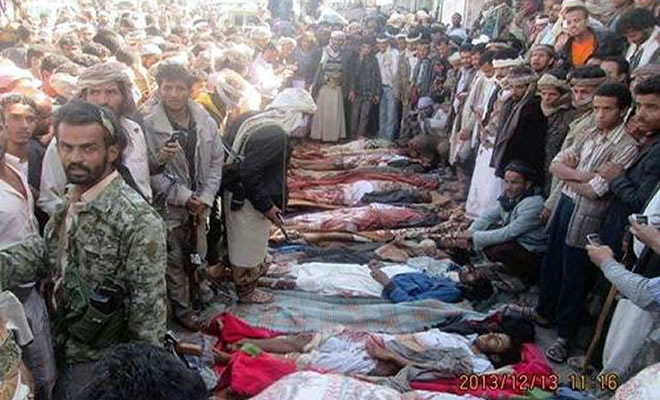
At Foreign Policy, CFR’s Micah Zenko has examined the best civilian casualty data available for both manned airstrikes and drone strikes between 2009-2015 and concluded, pretty damningly, that “Drones Kill More Civilians Than Pilots Do.”
According to the best publicly available evidence, drone strikes in non-battlefield settings — Pakistan, Yemen, and Somalia — result in 35 times more civilian fatalities than airstrikes by manned weapons systems in conventional battlefields, such as Iraq, Syria, and Afghanistan. There are sound arguments that can be made in favor of U.S. drone strikes, but their supposed precision should not be one of them.
As Zenko notes, this is an important corrective to the Obama Administration’s frequent claim that “drones are precise weapons.” But the article begs the question of how to explain this finding. And Zenko (or more likely the FP editors) make a few important mistakes here that, if attended, to, might lead to some potential answers to that “why” question.
1) Drones are piloted. The distinction isn’t between drones and piloted aircraft, it’s between manned and unmanned aircraft. And that difference is not just where the pilots sit – in a cockpit or a military shed in Nevada – bu also with who the pilots are – manned fighters are piloted by members of the armed forces, but some drones are piloted by CIA agents: civilians themselves not trained in the laws of war. A classified study of USAF manned strikes v. drone strikes in Afghanistan found similarly that manned strikes yielded fewer collateral deaths, and argued that the difference could lie in the laws of war training received by USAF pilot but not by the CIA.
2) It’s the Non-Battlefields Settings, Not the Drones. While the study is telling, note that Zenko compares apples and oranges: manned strikes in battlefields, v. drone strikes in non-battlefield settings. To really tell whether drones are more or less precise than manned craft, you’d need to study them in battlefield settings where manned strikes are also used. What this study can tell us with some certainty however is that we are killing more civilians outside battlefields – where frankly the civilian/combatant distinction doesn’t even make sense! – than in wars. And that is certainly something to be reckoned with. While drones can likely be used at least as lawfully and discriminately as other aircraft in actual war zones, attempting to insert them in non-conflict zones as law enforcement tools is another thing entirely.
3) In Non-Battlefield Settings, Suspected Terrorists are Civilians Too. And this leads to the final conceptual problem with Zenko’s article: like so many writings on drones, it seems to take for granted that the problem, even in non-combat zones, is “collateral damage” – the fact that we might kill a few civilians as well as those we’re actually targeting. But since war law only applies in situations of armed conflict, and the strikes he examines are by definition in non-battlefields settings, it’s more accurate to stay that even those we are targeting for execution are rightly understood as civilians. Criminal suspects to be sure, but under peacetime rules, summary execution of criminal suspects is a violation of human rights law. Blowing up neighborhoods in order to kill them, to avoid the trouble of capturing them, would be considered an atrocity if it happened in Paris or New York. And treating these acts as somehow comparable to what goes on in conventional battlefields may be part of the problem.
In short, it may not be the drones. It’s likely how we use them.
Charli Carpenter is a Professor in the Department of Political Science at the University of Massachusetts-Amherst. She is the author of 'Innocent Women and Children': Gender, Norms and the Protection of Civilians (Ashgate, 2006), Forgetting Children Born of War: Setting the Human Rights
Agenda in Bosnia and Beyond (Columbia, 2010), and ‘Lost’ Causes: Agenda-Setting in Global Issue Networks and the Shaping of Human Security (Cornell, 2014). Her main research interests include national security ethics, the protection of civilians, the laws of war, global agenda-setting, gender and political violence, humanitarian affairs, the role of information technology in human security, and the gap between intentions and outcomes among advocates of human security.

Some good points but:
1. The CIA does not pilot the drones used in its own operations. All the information we have is that these are piloted by US Air Force pilots and so the issue is not training or lack thereof. (See e.g.; https://www.theguardian.com/world/2014/apr/14/cia-drones-pakistan-us-air-force-documentary)
2. The problem – rarely discussed here – is not so much ‘how we use’ the drones but how the drones as a technology have made new uses and forms of violence possible. They enframe our possibilities for action in ways that encourage and even demand these uses; much as manned aircraft did before them.
John’s point #2 is on-target, and also consistent with Charli’s argument. People like to say that drones kill fewer civilians than carpet-bombing, but if we didn’t have drones, would we be carpet-bombing all these places? Or leaving most of them alone? And maybe sending in SOF raids when there’s a target that’s really worth it.
But it’s important to dispel the myth that drones are somehow technologically endowed with greater precision and ability to avoid collateral casualties, as compared with manned aircraft. That’s the real value of Zenko’s report and also the work of Larry Lewis, who found that, depending on which numbers he looked at, the rate of civilian casualties was either equal or a factor of ten greater with drones as compared with manned airstrikes.
There is no reason why drones would be more precise, since they use the same targeting systems as manned aircraft. Drones generally shoot small missiles, but those can also be launched from manned platforms. There is no magic here.